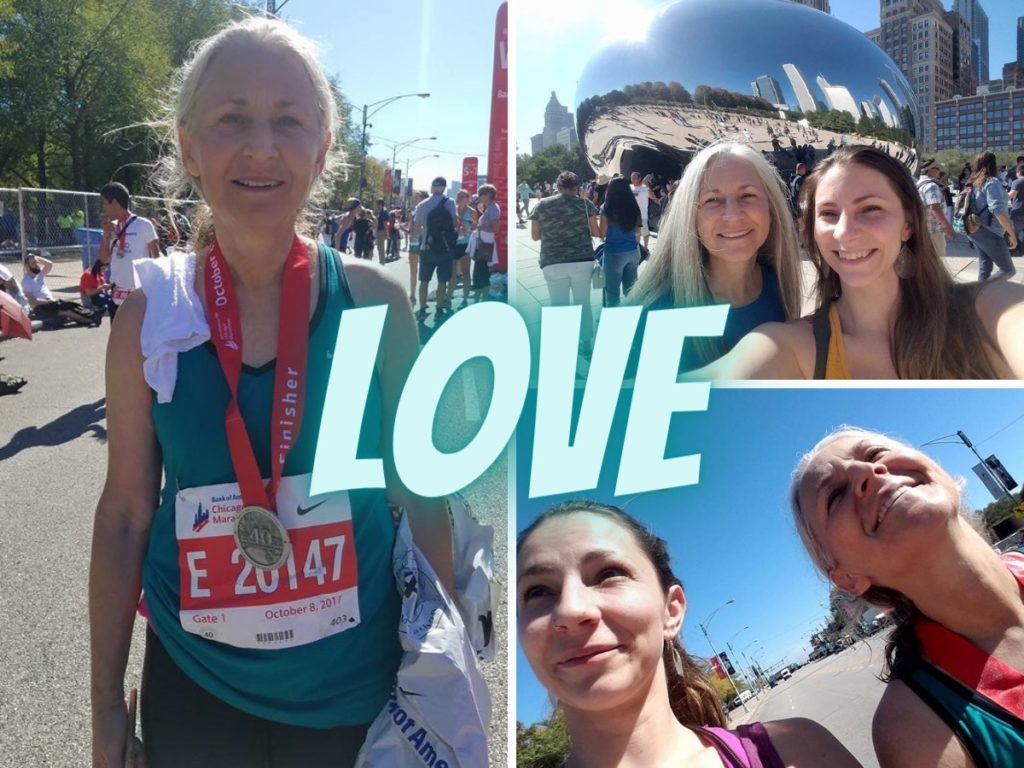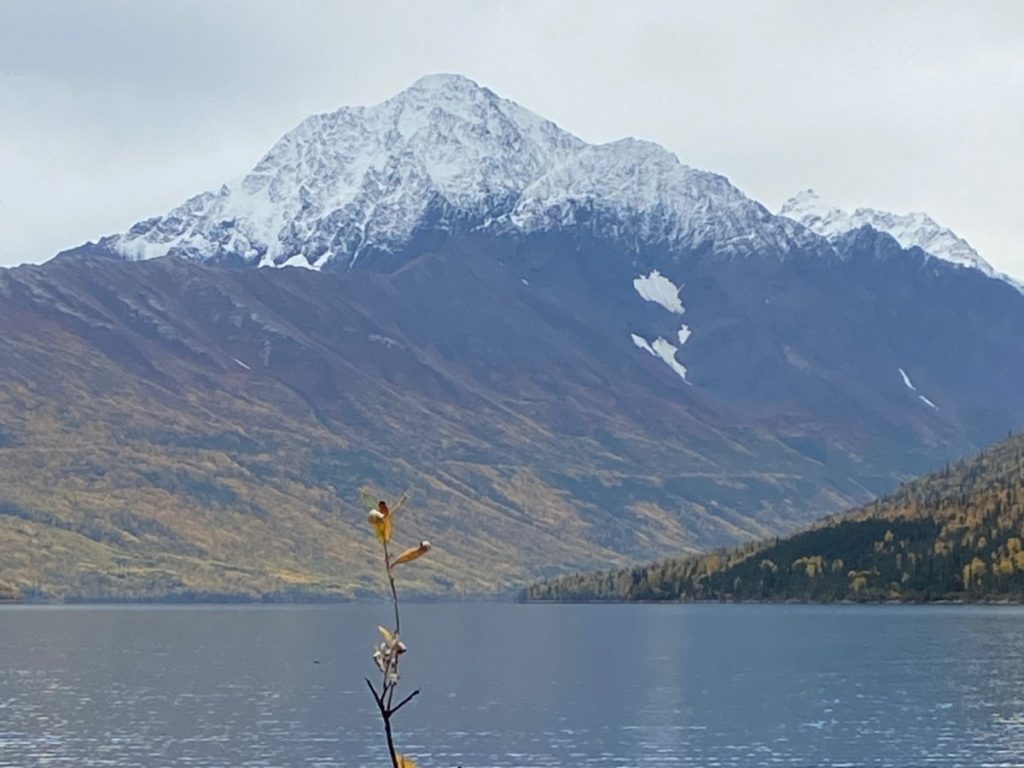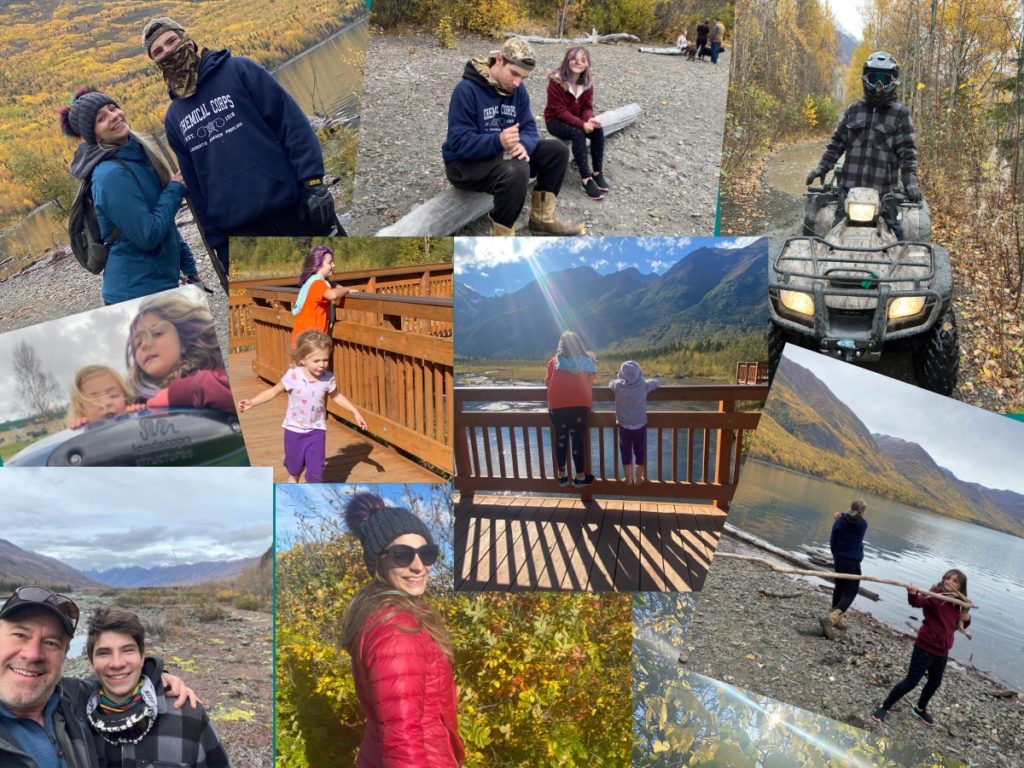The Chicago Marathon is this weekend and I am a little bummed that I am not able to run it. But, at the same time, I knew that the odds were against me. So, I can’t dwell on that too much. I have to evaluate what went wrong and take the steps to correct it. But, I can enjoy the memories of my previous Chicago marathon that keeps popping up on my social media and iPhone this week. Sonja and I had such a great time in Chicago and although I was undertrained even then, I absolutely loved it!

What Went Wrong
I was so excited to be able to run again after struggling with knee pain for the past few years. One thing that changed all of that was that I started running in the Altra Paradigm running shoe and later switched to the Altra Torin. These shoes have a lower heel-to-toe drop and stack height than the average running shoe. The more cushioned running shoe tends to increase my knee pain. Literally, I had absolutely no knee pain (FYI…I have a diagnosis of bilateral knee osteoarthritis) while running in the Altras. That was amazing!! And another factor was that I had started doing some mobility and strengthening exercises.
So for a few months, I continued to build my mileage with fairly easy runs. And then I leaped right into marathon training before my body was ready. Cardiovascular endurance tends to improve faster than the muscles, tendons, and ligaments gain strength, which I didn’t take into consideration. Once I could run comfortably cardio and respiratory-wise, I increased the pace and with the marathon training, I also added speed work and long runs. It simply was just too much.
I also ignored the warning signs. I had a left calf tear in June and gave it three weeks to heal and then picked up running according to the training schedule. And once covid hit, I missed another week of training. Again, I picked up on my training schedule where I should be instead of backing off a bit. And a week later, I had Achilles tendonitis in my left leg. I continued to run because the pain was mild, but that made things worse. So, there you have it. Not exactly a setup for success now is it?
- Too much load too soon – increase intensity, increased pacing, faster workouts
- Too much volume – Increasing mileage too fast for what my body was prepared for
- Not listening to my body
- And although I didn’t mention this above, I was not properly fueling or staying well hydrated.
The key is to build a base that can be run comfortably for a few weeks and then increase that by 5-10%. Adding down weeks or recovery weeks is also beneficial. And obviously, taking as much time as needed to build the base (read don’t jump right into marathon training) is also very important. The problem was that I decided to run a marathon when I was just starting to run again. Moving that quickly to such a huge goal as the marathon doesn’t work that great for us older folks. We need more time, well at least I do.
In addition, strength training is so important which I have been doing but maybe not to the extinct that I need. Building muscle does take time and getting this Achilles tendon stronger is also taking a while. One of the problems is that tendon injuries tend to require a lot of load (heavy weights which is different from running load) to heal and become stronger. If the supporting muscles around the tendon are also weak, then healing could be potentially delayed until those muscles become stronger. It seems like a catch-22. The tendon can’t get stronger without the support of stronger calf muscles and it is difficult to overload a very tender Achilles tendon.
Even though I have been able to run some, my focus is on strengthening so that I can return to full running stronger and hopefully without another injury. So, I am prepared to take however long is necessary to get through this process. Yet, today I went to my Pt and due to the lack or little progress I have made in strengthening my calf muscle, she said that we were going to do BFR training. WTH is that?
Truly I have never heard of BFR – blood flow restriction – which is a method of decreasing arterial blood flow and obstructing venous blood flow during exercise. This is done by applying a pneumatic tourniquet, similar to a blood pressure cuff, to the most proximal area of the limb (in my case it was the left leg).
“By restricting blood flow on the limb using a cuff, we can reduce the amount of blood flowing out of the limb, but still allow blood to flow in. When we combine this with very light exercise/loading – such as lifting a light weight or even pedalling a bike, metabolites (what your muscles produce when they work) build up in the limb. This is beneficial, as BFRT “tricks” your body into believing it is working harder than it actually is due to the presence of the metabolites.” Click anywhere in this quote to get more info on how strength can be gained using this method.
Once the pressure was applied, I was asked to do low-intensity exercises with increased repetitions and then I would get a 30-second break from the exercise and the pressure (get a little blood flow back to the muscles). I didn’t feel like I was really working that hard but the pressure was uncomfortable and I could feel a little bit of a burning sensation in my lower leg. With increased pressure, the exercises became harder.
I didn’t particularly enjoy this type of workout but if that is what is needed to get my tendon stronger then maybe it is worth it. This article review gave me some hope that BFR can help to gain tendon and calf muscle strength so that I can return to running soon but I have to say, I am still a bit skeptical. Why not just take a little longer to build the strength to where it needs to be?
“A recent article by Centner et al. 2019 has provided us a significant glimpse of hope for less mechanical load (and potentially less pain) necessary to induce positive adaptations in problematic tendons. The study found that throughout a span of 14 weeks, combining BFR with a progressive calf raise program significantly improved the health and function of the Achilles tendon. The tendon got bigger and stiffer, while the calf muscle size and strength improved, all of these things are super helpful and beneficial when dealing with any kind of tendinopathy or tendon issue.” https://www.smarttoolsplus.com/blog/what-can-bfr-physical-therapy-help-treat/
BFR is not a new therapy but it is gaining popularity in the clinical setting. There are many studies and articles about this type of treatment on the web which are way beyond the scope of this blog post. My intent is just to bring awareness to this type of treatment and an update on where I am in my training. I am running some, but I am leary of causing more damage so it has been slow and infrequent. I have tried some interesting methods, so stay tuned for the update coming soon.
In the meantime, I have been enjoying Alaska’s fall weather. Although it has been more rain than usual, it still has been pretty awesome. We have been getting a little snow on the mountains, and the color changes of the leaves and tundra have been amazing. And now that the sun is setting while I am still up, I have caught some pretty awesome sunsets as well. I wish my iPhone could capture the beauty a little better.


And a couple of outings with Sonja and the kids (Matt has been out of town) have been so fun! Tylor and Scott took the 4-wheelers to Eklutna and had a great time together.

So, that’s the update for this week. I know that I have talked about this injury in other blog posts but I just wanted to tie it all together and just move on from here. I am not giving up, just slowing down. And what better time than now at basically the end of the running season? My plan is to build strength and return to running slowly. I do not have any plans to run or train for a marathon in the near future but I will be again soon enough.
Happy Running!

Leave a Reply